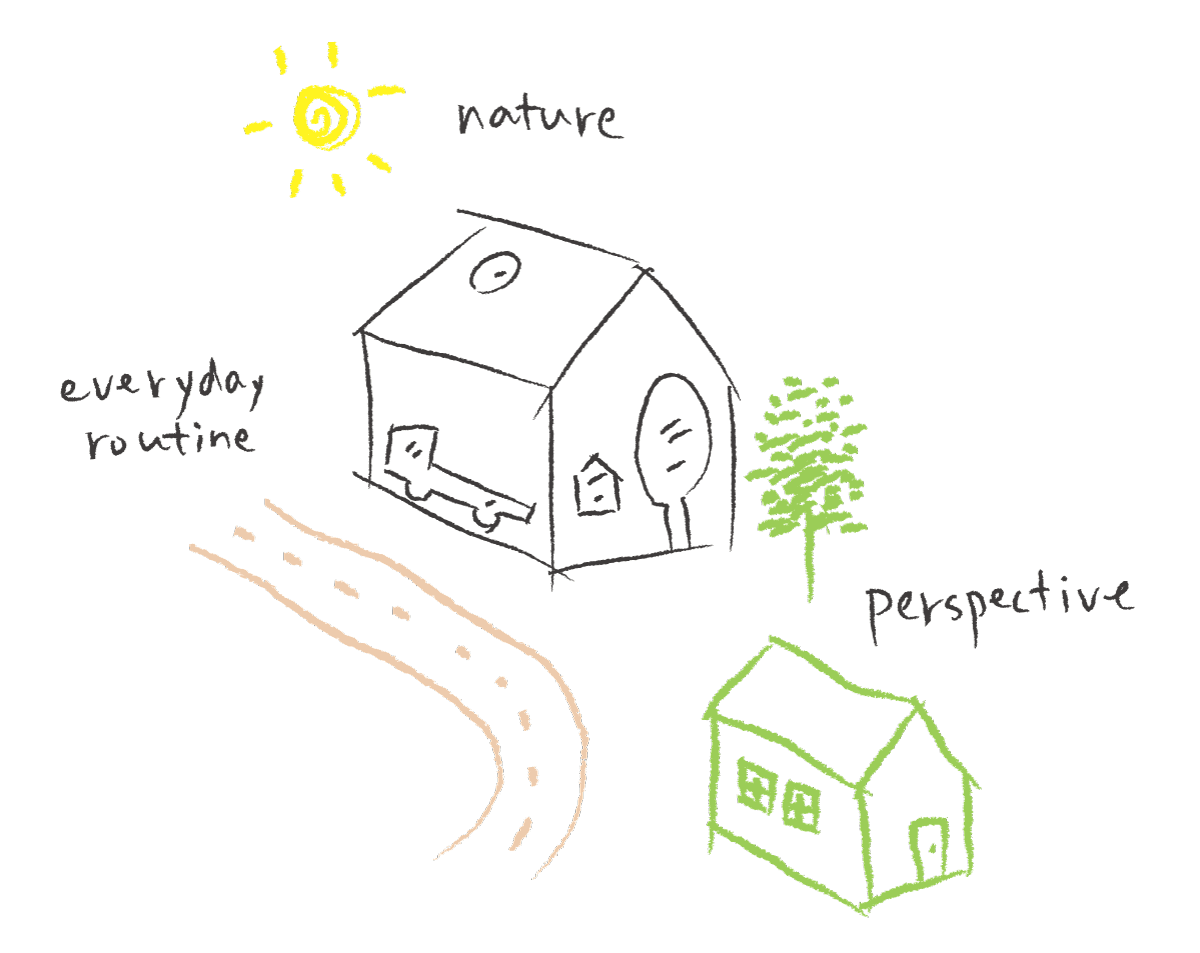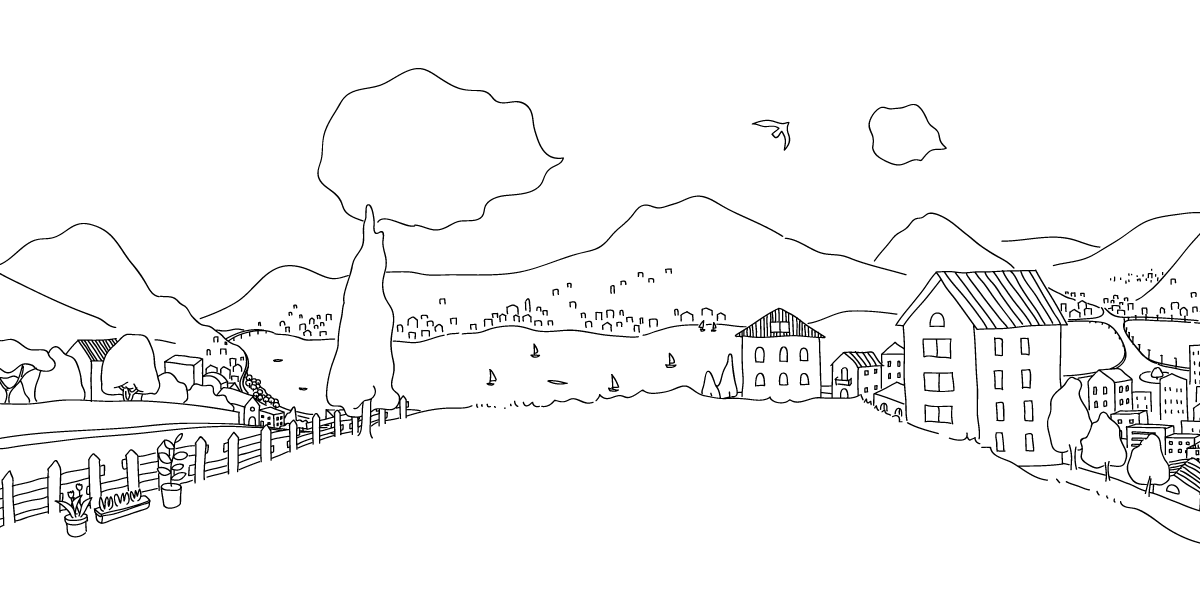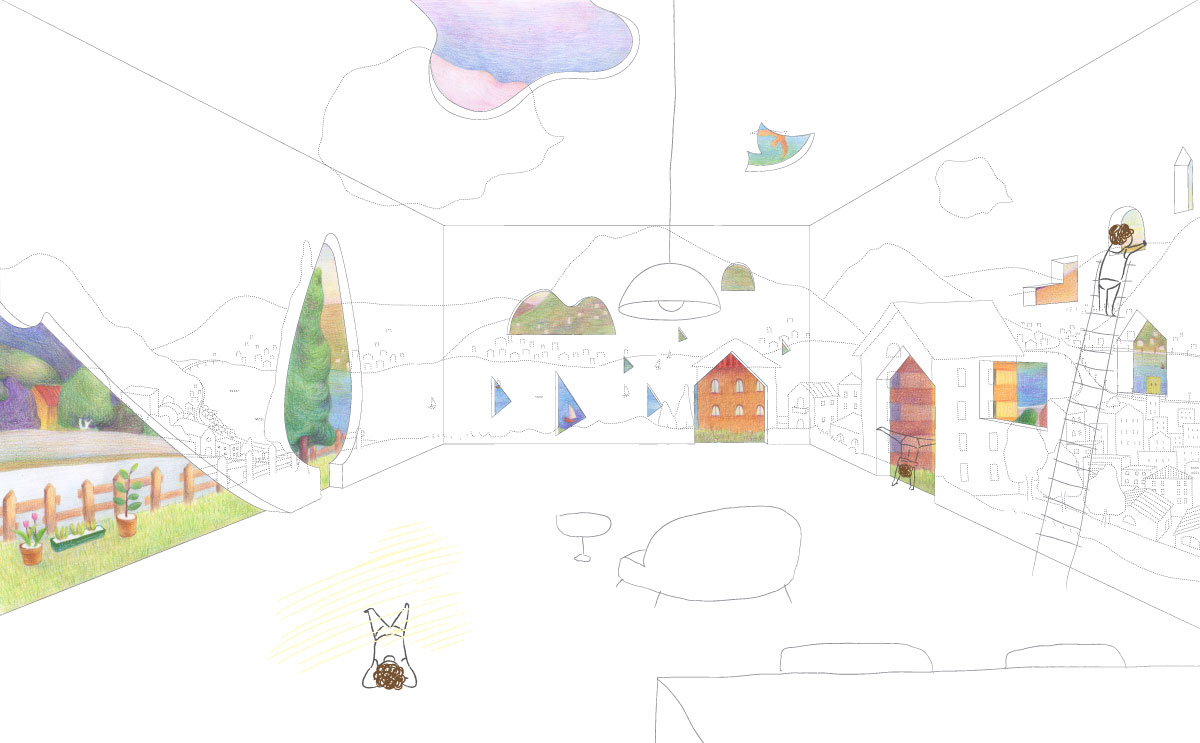
This is a competition we participated and lost in 2015. The competition has been sponsored by a glass company for the past decades, many topics therefore were closely connected with glass. This year is the 50 year anniversary, maybe that’s why the topic is called “the glass”, asking participants rethink the role of glass in architecture.
Our idea started from a simple question: if the main purpose of glass is to permit people to see between inside and outside, then what does it mean to people who are blind? Probably, glass still serves as a connection between in and out, not in terms of view, but it allows more sounds, vibration, and temperature changes. When a storm is building up outside, people who cannot see flashes of lightning may be able to feel the dropping temperature, rain drops knocking on glass, and the sound of neighbour closing shutters.
Seems not too bad, until we knew that people who cannot see hardly build up perspective in their mind. They live in a flat world without depth, having little perception of the spatial relationship among objects and that between themselves and surroundings.

Can we change that by doing something, to the glass?
A simple fact interested us: people normally cut glasses into simple geometry like rectangle for architectures. Why? Because we want to see outside views but not the interface itself, therefore we keep the interface as simple as possible for keeping the distraction brought by it as little as possible. Then why rectangular? Because they are regular. Everyone uses rectangular, therefore we tend to ignore it whereas we will notice circular, triangular or even square windows.

Similar thing happens to where we put glass. Architects work hard on bridging inside and outside, in plain words, making people see beautiful things in a comfortable way. Architects also work hard on creating unique spaces, sequences, experiences which may hardly be achieved without the participant with the ability to see.
You see (even here we use “see”), the normal way of using glass in architecture is under the consideration of serving people with eye-sight, in terms of shape and location. If we are asking whether glass could help people with blindness experience a world with depth, the answer may lies in shape and location.



Shapes represent objects, locations establish space. Assisted by sunlight, air, and time, they could help people with blindness get an even larger view scope, with depth. People could touch, hear and feel to “see”. However, here the glass is not the window, the whole house is.